Part of a series of articles titled Volcano Types.
Previous: Older Caldera Complexes
Next: “Super Volcanoes”
Article
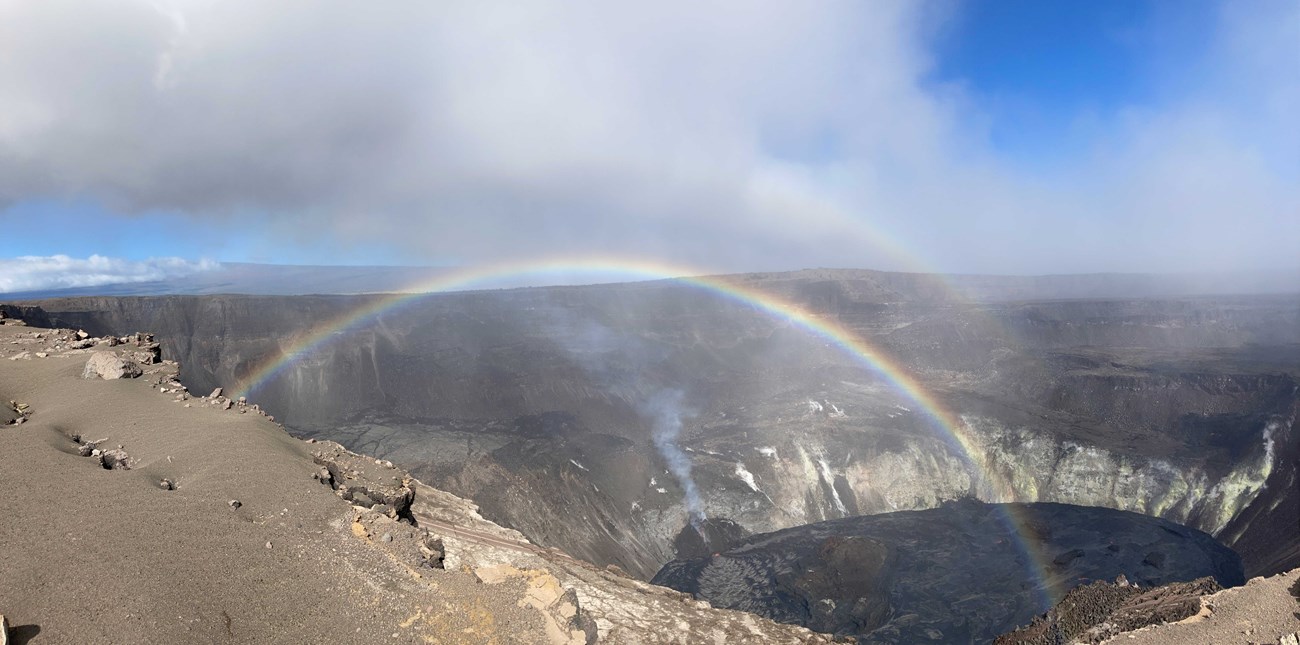
USGS photo by H. Dietterich at 10:11 a.m. HST on January 6, 2021.
Nonexplosive calderas are found at the summit of large shield volcanoes, including Kīlauea and Mauna Loa in Hawai’i Volcanoes National Park. Unlike summit and resurgent calderas, calderas on shield volcanoes do not form during explosive eruptions. Instead they form when the summit area collapses due to the withdrawal of magma from shallow magma chambers. The magma withdrawal may occur due to flank eruptions in rift zones.
Nonexplosive calderas can form at other basaltic volcanic centers such as Twin Calderas, a long-lived vent in Bering Land Bridge National Monument that was active during the Pleistocene.
At least four national parks contain nonexplosive calderas:
Two small calderas formed at a long-lived basaltic volcanic center between 800,000 and 900,000 years ago. These calderas have a diameter of 1,700 and 2,500 ft (520 and 760 m) and are 50 to 120 feet (15 and 36 m) deep.
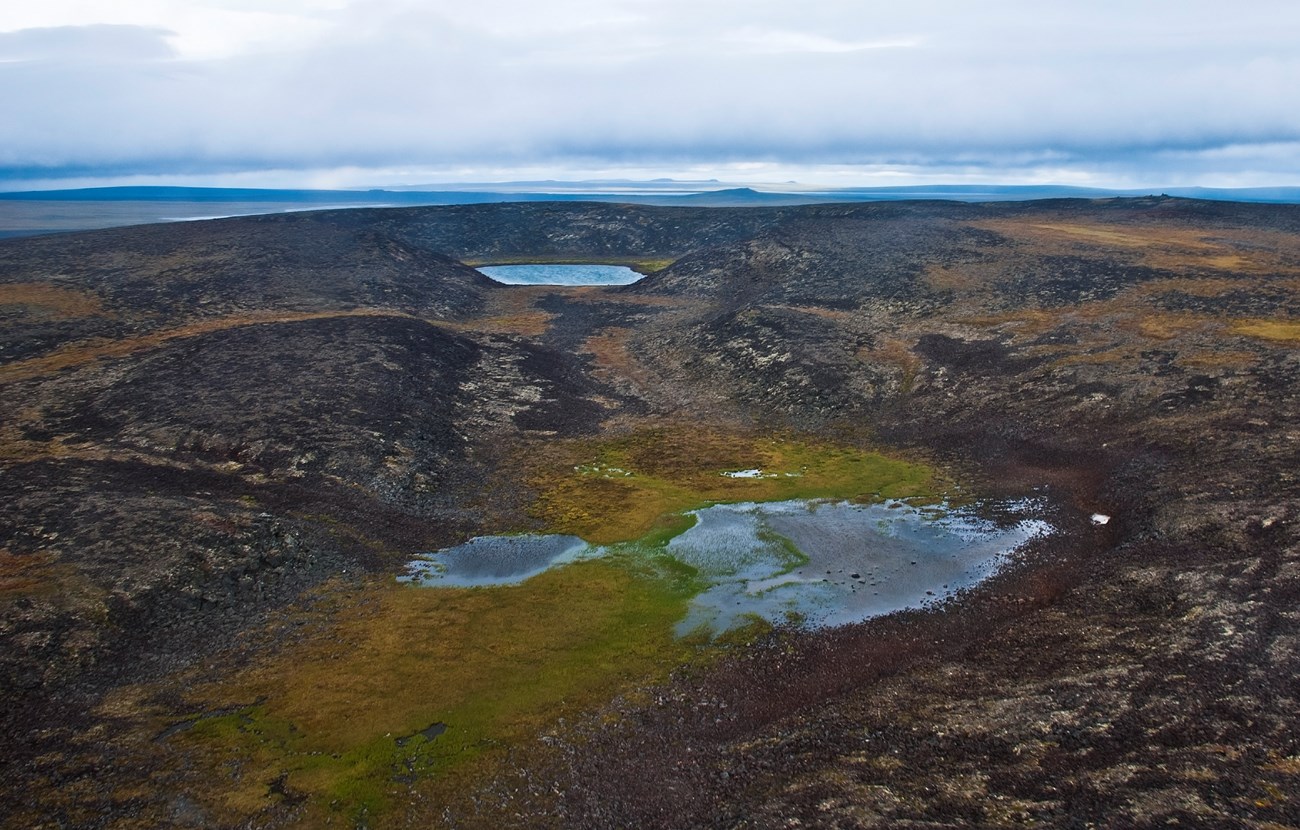
NPS photo.
Both shield volcanoes in Hawai’i Volcanoes National Park, Mauna Loa and Kīlauea, have nonexplosive calderas at their summits.
The Kīlauea caldera covers an area of approximately 2.6 miles (4.2 km) by 2.0 miles (3.2 km) in dimension. The modern Kīlauea caldera collapsed about 500 years ago. Numerous calderas have existed during the volcano’s lifespan with the previous one forming about 2,200 years ago. This caldera ultimately was filled by lava flows.
The Kīlauea caldera underwent extensive collapse in 2018 during the largest eruption of Kīlauea in about 200 years. The collapse occurred when an eruption along the lower East Rift Zone partially drained the summit magma chamber which in turn caused subsidence in the caldera. The lava lake in Halemaʻumaʻu pit crater drained, and the pit crater doubled in width and increased in depth by nearly ten times.

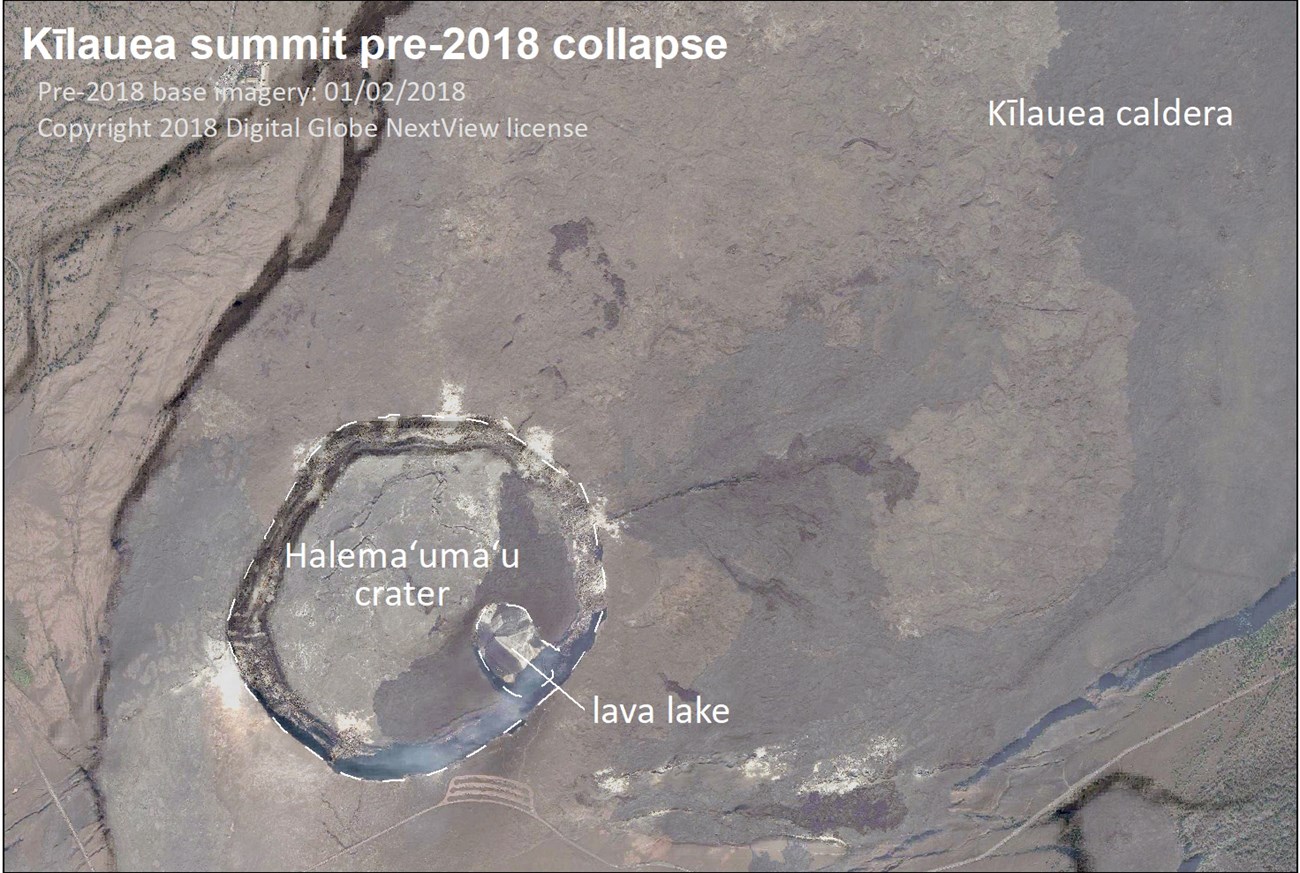
USGS photo.
Moku‘āweoweo, Mauna Loa’s caldera, is about 4 miles (6.2 km) long by 1.5 mi (2.5 km) wide, consisting of three oval depressions and is located at the summit above 12,000 feet (3,660 m) in elevation. Mauna Loa has had several calderas during its history that were filled in by later eruptions, with this caldera forming between 1,000 and 1,500 years ago. It formed during a large eruption on the northeast rift zone that produced the Pana`ewa lava flow that covers an area of 66 square miles (172 square km) with a maximum thickness of more than 33 ft (10 m).

USGS photo by Ben Gaddis.
American Samoa is made up of eroded Pleistocene-age shield volcanoes.

NPS photo.
Several of the andesite shield volcanoes in Wrangell-St. Elias National Park contain nonexplosive calderas.
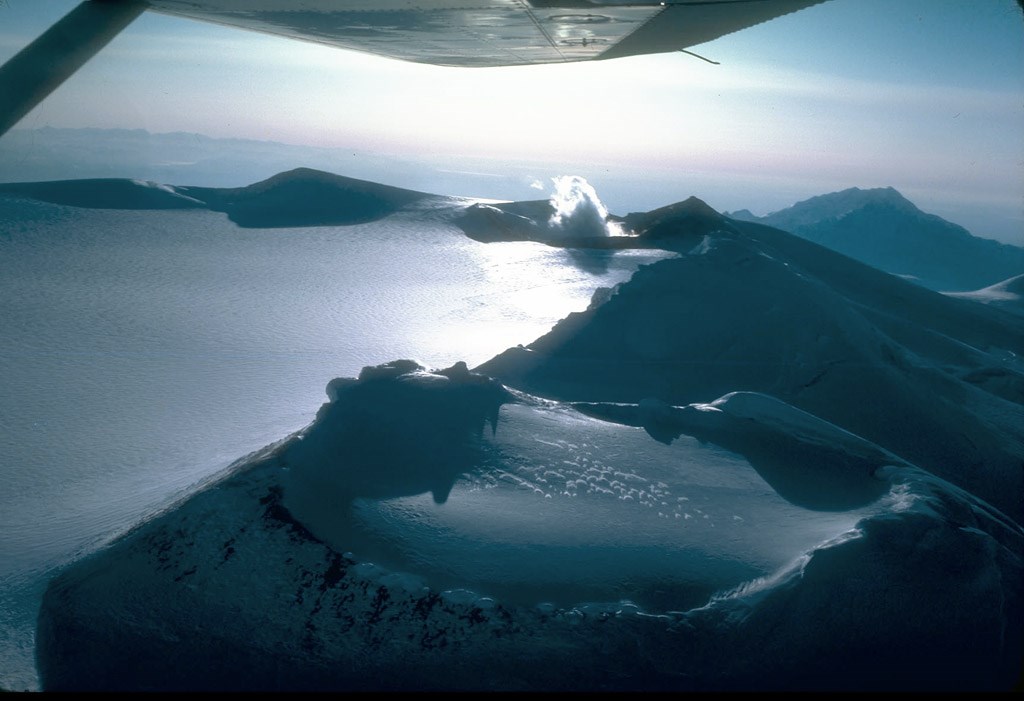
USGS Photo by R. J. Motyka, Alaska Volcano Observatory, 1987.
Nonexplosive calderas are typically steep-sided and may have relatively flat floors due to filling with lava flows or lava lakes. They may also contain smaller collapse structures known as pit craters.
Lavas of basalt to andesite composition are typically erupted in nonexplosive calderas. This is also true of shield volcanoes where nonexplosive calderas occur.
Most eruptions in nonexplosive calderas are effusive, usually 0-1 on the Volcanic Explosivity Index (VEI), typically in the Hawaiian eruptive style. These eruptions produce fluid lava flows and may produce fire-fountains.
Pit craters are small craters formed from subsidence or collapse. They may be present within nonexplosive calderas at the summit of shield volcanoes, such as Halemaʻumaʻu in the Kīlauea caldera.
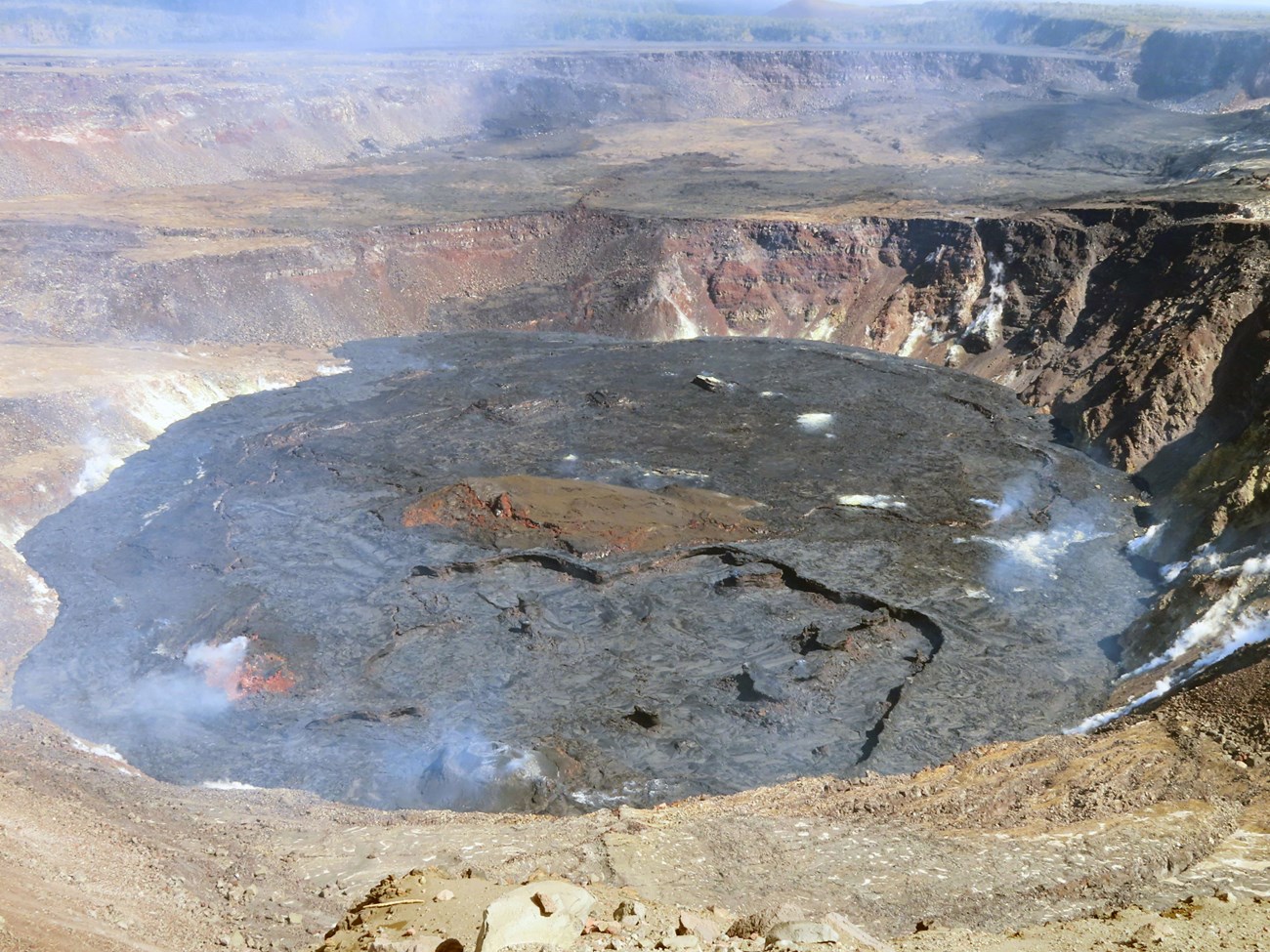
USGS photo by J.M. Chang.
Lakes or molten or solidified lava may be present in summit calderas of shield volcanoes. Lava lakes may form when there is open connectivity between the vent and the subsurface magma chamber.
Fumaroles in nonexplosive calderas indicate where heat and magmatic or meteoric gases are escaping. Fumaroles are also present when there is molten lava present.
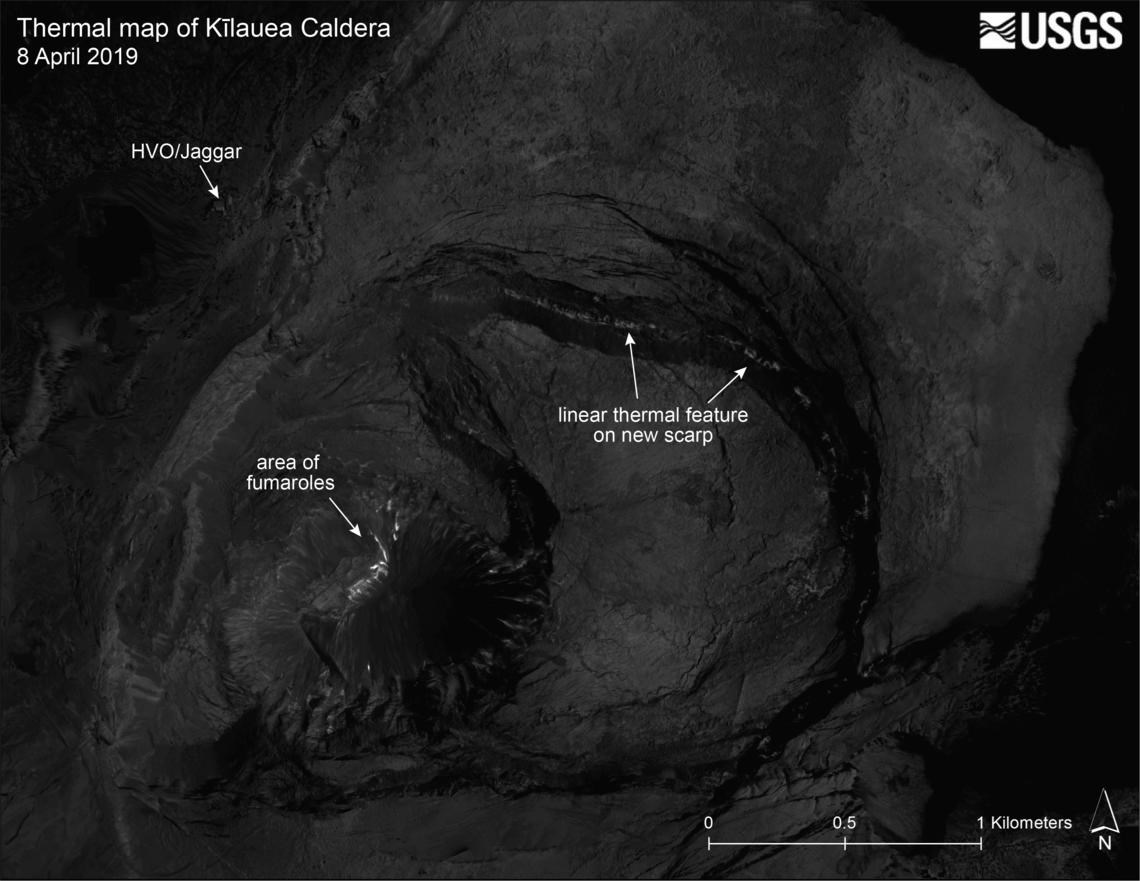
Nonexplosive calderas are usually located at the summit of large shield volcanoes, but they may occur in other basaltic volcanic centers.
Vog (volcanic smog) consists of SO2 (sulfur dioxide) gas and aerosols produced by eruptions or gas emissions in nonexplosive calderas. It presents a hazard both in the immediate area and to people who are downwind.
Rock falls, subsidence, and active fumaroles may also present volcanic hazards.
Bering Land Bridge National Preserve (BELA), Alaska—[BELA Geodiversity Atlas] [BELA Park Home] [BELA npshistory.com]
Hawai’i Volcanoes National Park (HAVO), Hawai’i—[HAVO Geodiversity Atlas] [HAVO Park Home] [HAVO npshistory.com]
National Park of American Samoa (NPSA), American Samoa—[NPSA Geodiversity Atlas] [NPSA Park Home] [NPSA npshistory.com]
Wrangell-St. Elias National Park and Preserve (WRST), Alaska—[WRST Geodiversity Atlas] [WRST Park Home] [WRST npshistory.com]
Part of a series of articles titled Volcano Types.
Previous: Older Caldera Complexes
Next: “Super Volcanoes”
Last updated: April 17, 2023